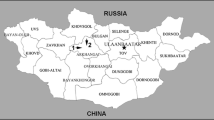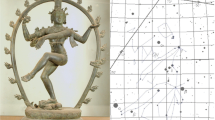Abstract
The Late Bronze Age in central Kazakhstan may be considered an incubation time for significant social and political changes that would soon transpire with the coming of the Early Iron Age. In seeking material evidence that might predict the imminence of such changes, differences in technology and artifact makeup were noted in the visual and microscopic investigation of local LBA bronze assemblages separated in time by one to three centuries. During this period, tin alloying in copper became more prominent while there was growing dependence on casting for fabrication. This change in technology apparently came with the increasing demand for weapons and decorative items, signifying the emergence of conflicts and social differentiation. No evidence was noted, however, of the fabrication of the metallic horse harness or of the use of lead or arsenic in copper alloys. The diachronic differences, clearly visible when viewing the LBA bronze assemblages in comparative perspectives, indicate that the emergence of conspicuous technological and social transformations at the turn of the EIA era could be regarded as an intensification of the changes already in progress in central Kazakhstan during the LBA period.





Similar content being viewed by others
References
Anthony DW (2007) The horse the wheel and language—how Bronze-Age riders from the Eurasian steppes shaped the modern world. Princeton University Press, Princeton
Baipakov KM, Taimagambetov ZK, Zaibert VF, Savelieva TV, Park JS, Nurmuhanbetov BN, Voyakin DA, Umarhodzhiev AA, Amirov ESh, Mamirov TB, Seitkaliev MK, Sorokin DV, Sviridov AN, Kaldybaev MS (2009) Scientific report AR-12/34 on the investigation of archaeological sites of Bozshakol in Central Kazakhstan. Archive LLC archeological expertise volumes 1-3, Almaty Kazakhstan (in Russian)
Beisenov AZ, (2015a) Organization and early stages of the studies implemented by the Central-Kazakhstan Archaeological Expedition. in: History and culture of the communities of south-western Siberia and surrounding regions (Mongolia, Kazakhstan, China). International Scientific and Practical Conference (20-23 April 2015). Gorno-Altaisk: RIO GAGU, Gorno-Altaisk: GAGU, pp 40–47 (in Russian)
Beisenov AZ (2015b) Sites of the Upper Atasu River in the Central Kazakhstan. Bulletin of TGU 3(35):111–122 (in Russian)
Beisenov AZ, Varfolomeev VV (2008) Bugazy burial ground-Central Kazakhstan in the Begazy-Dandybay era. Monograph, Inzhu-Marzhan, Almaty (in Russian)
Beisenov AZ, Varfolomeev VV, Kasenalin AE (2014) Monuments of Begazy-Dandybay culture of Central Kazakhstan. Monograph, Institute of Archeology, Almaty (in Russian)
Beisenov A, Bedelbayeva MV, Ermolaeva AS, Kurmankulov Z, Akhiyarov IK, Duisenbay DB (2017) Archaeological research in northern Betpakdala. Monograph, Institute of Archeology, Almaty (in Russian)
Berdenov SA (2008) Kazakhstan deposits of copper and tin and their development in the Bronze Age. in: News of the National Academy of Sciences of the Republic of Kazakhstan. Series of social sciences. 1: pp. 42-55 (in Russian)
Chernykh EN, Kuzminykh SV (1989) Ancient metallurgy in the northern Eurasia (Seyma-Turbino phenomenon). Academy of Sciences of the USSR Institute of Archaeology, Moscow <NAUKA> (in Russian)
Christian D (1998) A history of Russia, Central Asia and Mongolia, volume I, Inner Eurasia from prehistory to the Mongol Empire. Blackwell Publishing, Oxford
Craddock PT (1979) The copper alloys of the Medieval Islamic world ‐ inheritors of the classical tradition. World Archaeology 11 (1):68–79
Degtyareva AD (2010) The history of metal production in the southern trans Ural region during the Bronze Age. Academy of Sciences of the USSR Institute of Archaeology, Novosibirsk <Nauka> (in Russian)
Degtyareva AD, Kuzminykh SV, Loman VG, Kukushkin IA, Kukushkin AI, Dmitriev EA (2019) Metal vessels of the Bronze Age in Kazakhstan. J Archaeol Sci Rep. https://doi.org/10.1016/j.jasrep.2019.102024
Donahue DJ, Linick TW, Jull AJT (1990) Isotope-ratio and background corrections for accelerator mass spectrometry radiocarbon measurements. Radiocarbon 32(2):135–142
Kadyrbayev MK, Kurmankulov Z (1992) The culture of the ancient pastoralists and steelworkers of Sary-Arka. Gylym, Alma-Ata (in Russian)
Kuznetsova EF, Teplovodskaya TM (1994) Ancient metallurgy and pottery-making in Central Kazakhstan. Gilim Publishing, Almaty Kazakhstan (in Russian)
Lee JS, Park JS (2014) Effect of changes on color characteristics by microstructural transformations of Cu-Sn bronzes. J Conservation Sci 30(4):417–425
Park JS, Joo JO (2017) The social implications of technological variability as observed in high tin bronze objects of the Unified Silla. Korean J Met and Mater 55(10):745–751
Park JS, Beisenov A, Voyakin D (forthcoming) The technological and social implication of the discriminated use of tin and arsenic noted in EIA copper-based objects of Central Kazakhstan. Submitted to Archaeol and Anthropol Sci
Reimer PJ, Bard E, Bayliss A, Beck JW, Blackwell PG, Bronk Ramsey C, Buck CE, Cheng H, Edwards RL, Friedrich M, Grootes PM, Guilderson TP, Haflidason H, Hajdas I, Hatté C, Heaton TJ, Hogg AG, Hughen KA, Kaiser KF, Kromer B, Manning SW, Niu M, Reimer RW, Richards DA, Scott EM, Southon JR, Turney CSM, van der Plicht J (2013) IntCal13 and MARINE13 radiocarbon age calibration curves 0-50000 years cal BP. Radiocarbon 55(4):1869–1887
Stuiver M, Reimer PJ (1993) Extended (super 14) C data base and revised CALIB 3.0 (super 14) C age calibration program. Radiocarbon 35(1):215–230
Stuiver M, Reimer PJ, Reimer RW (2017) CALIB 7.1 [WWW program] at http://calib.org, accessed 2019-3-13
Varfolomeev VV, Loman VG, Evdokimov VV (2017) Kent – City of the Bronze Age in the middle of Kazakhstan steppe. KazNII of Culture, Astana
Yermolayeva AS, Kuzminykh SV, Pak JS, Dubyagina YV (2019) Late bronze age weapons from foundry workshops of Taldysay settlement, Central Kazakhstan. Stratum plus 2:109–120 (in Russian)
Acknowledgments
This work would not have been possible without the generous support from the scholars in the Margulan Institute of Archaeology in Almaty, Kazakhstan. The analysis using the optical microscope and SEM was carried out by JSP in his laboratory at Hongik University, Korea. The preparation of this manuscript was done while one of the authors (JSP) was a visiting scholar at School of Anthropology, University of Arizona. Mr. Jason Buschman is acknowledged for his linguistic assistance with this manuscript.
Funding
The analysis and research presented was financially supported by the National Research Foundation of Korea (NRF- 2017R1A2B4002082).
Author information
Authors and Affiliations
Corresponding author
Additional information
Publisher’s note
Springer Nature remains neutral with regard to jurisdictional claims in published maps and institutional affiliations.
Rights and permissions
About this article
Cite this article
Park, JS., Voyakin, D. & Beisenov, A. The implication of diachronic changes reflected in LBA bronze assemblages of Central Kazakhstan. Archaeol Anthropol Sci 12, 7 (2020). https://doi.org/10.1007/s12520-019-00989-z
Received:
Accepted:
Published:
DOI: https://doi.org/10.1007/s12520-019-00989-z




